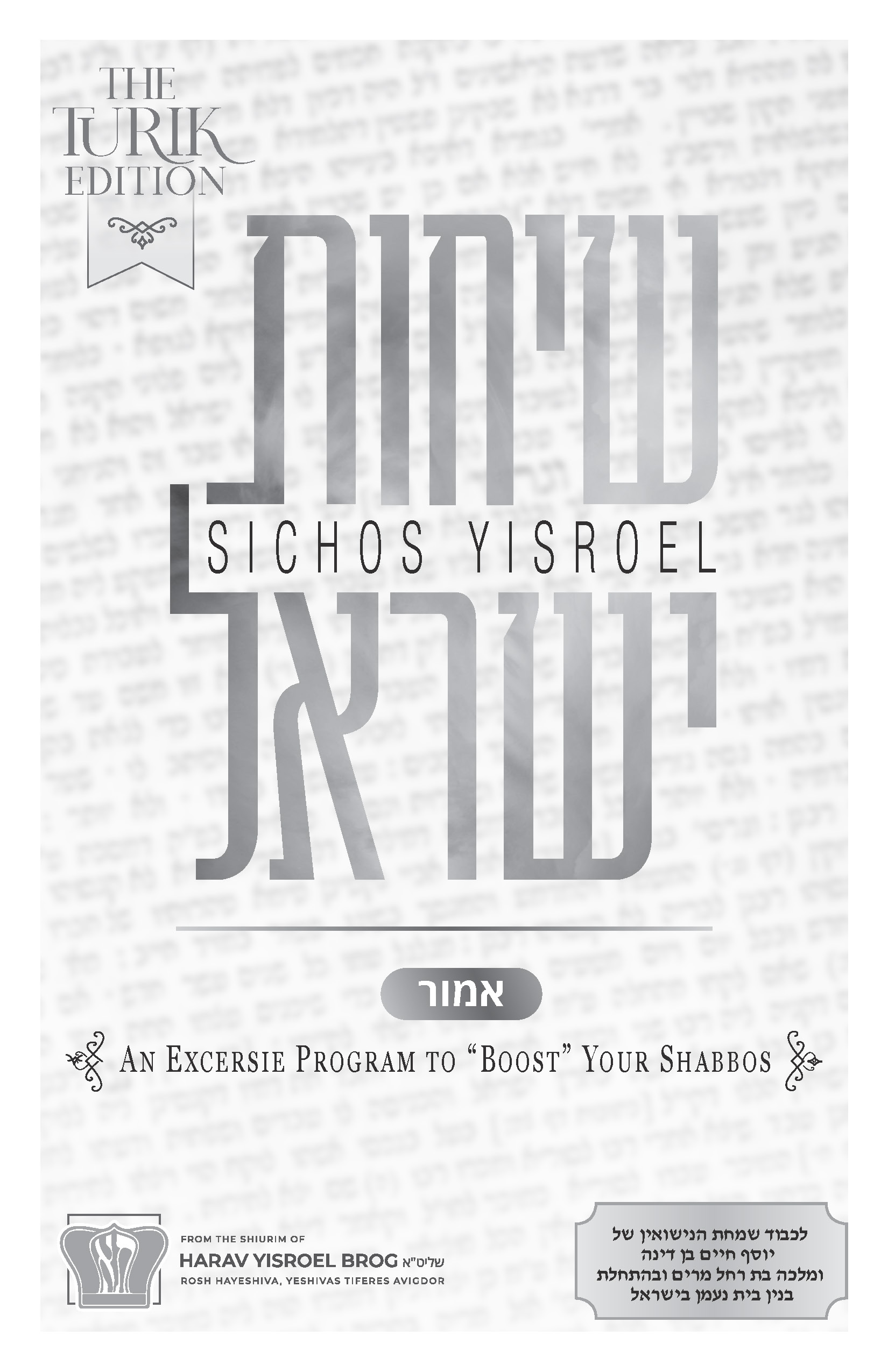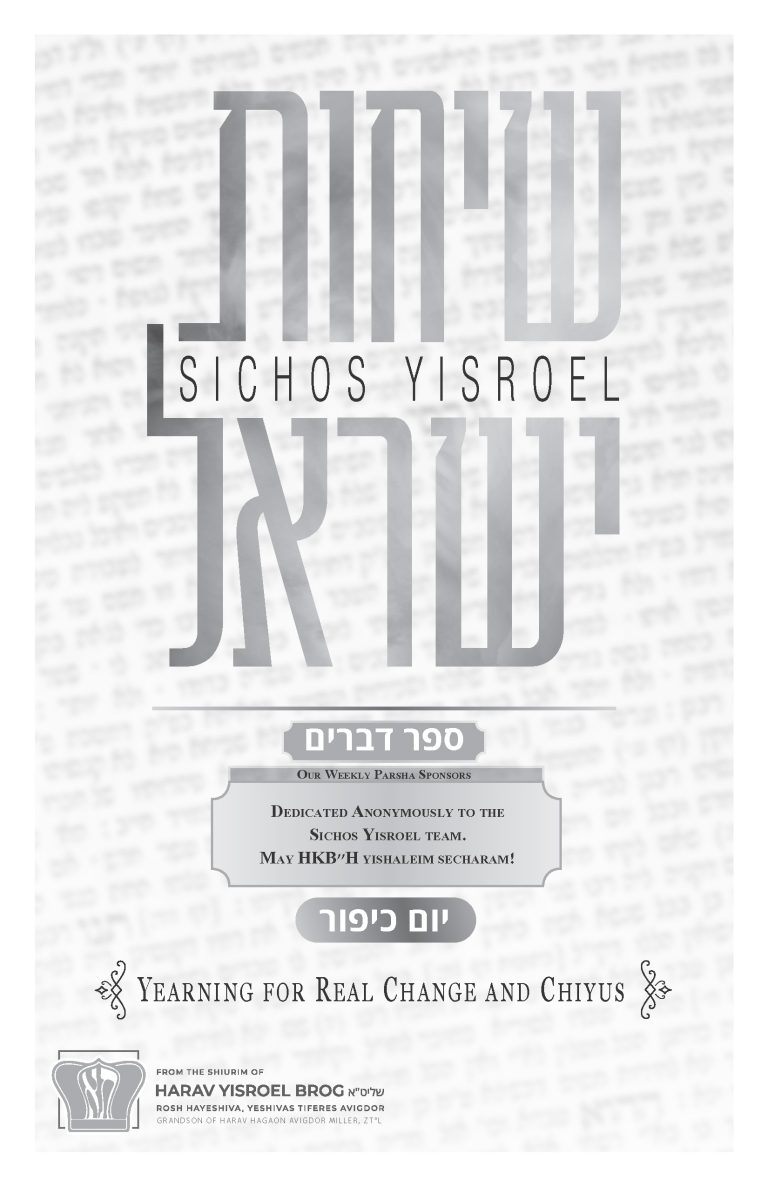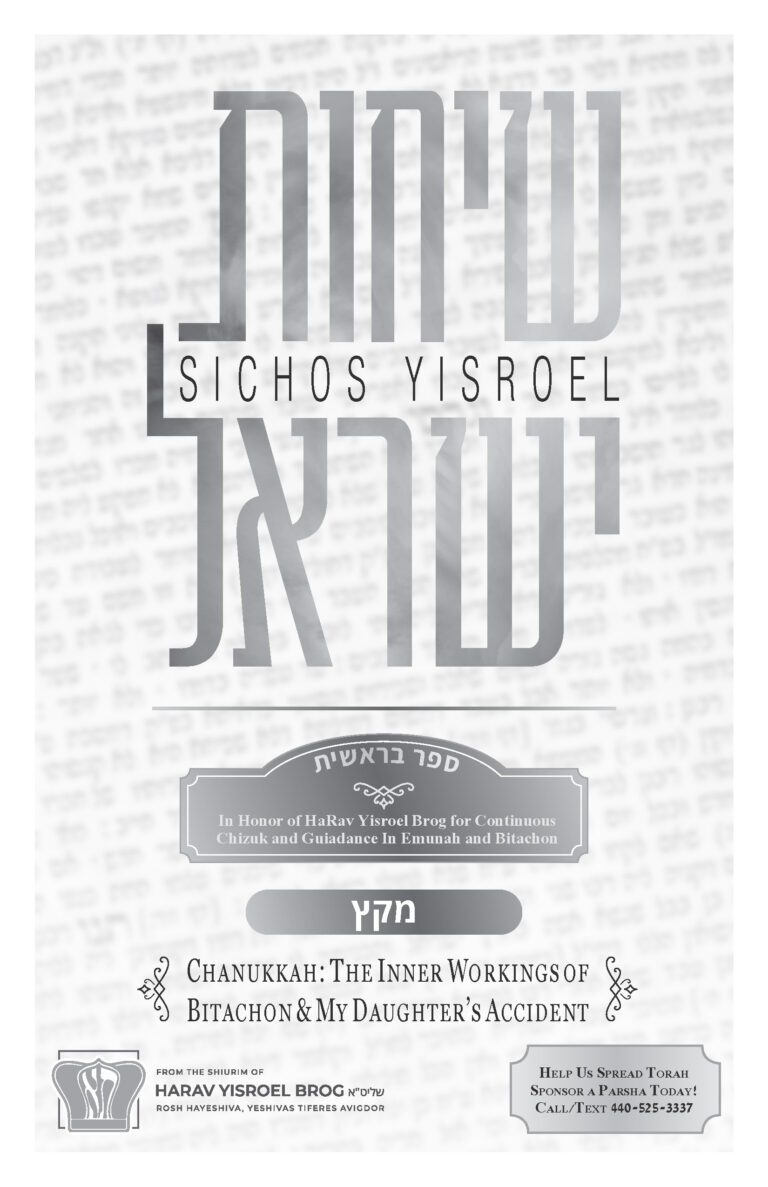Emor 5782 – An Exercise Program to “Boost” Your Shabbos
לכבוד שמחת הנישואין של יוסף חיים בן דינה ומלכה בת רחל מרים ובהתחלת בנין בית נעמן בישראל
Visit YTATorah.org
Shiur presented in 5781

לכבוד שמחת הנישואין של יוסף חיים בן דינה ומלכה בת רחל מרים ובהתחלת בנין בית נעמן בישראל
Visit YTATorah.org
Shiur presented in 5781

The time period of the year that we now find ourselves is the most unique period of the entire year. There are no other days remotely like this. We’ll start with some words from the Rambam (Hilchos Teshuva 2:6) who writes the following: Even though teshuvah and davening are always yafeh (nice)…Now, let us pause for a moment and study those words. The Rambam says that teshuvah and davening, both teshuvah and crying out to Hashem, are yafeh all year long. What does that mean that it’s yafeh? What does that mean, it’s nice?

We speak about the greatness of the Chashmonaim. But any time you talk about the greatness of someone, you always have to know, how do you translate that to your life? We talk about the Chafetz Chaim or the Vilna Gaon, and I can tell you how superb and how great they were and how committed they were. But then the question is, “How do I plug into that?”
Shiur presented in 5779 Paranoid Parents Raise Paranoid Children One of the more common experiences in life is fear. When children are still babies they are surrounded by parents who live in a complete environment of fear. Parents are afraid their child may die in a crib, or choke on something, or fall down, or…

In this week’s parshah, we encounter a life challenge that many of us will face to some degree. Most people lose themselves completely when they face such a challenge. The Torah says that when Yosef finally meets his brothers and he tells them, “…don’t be angry at yourself that you sold me.” Could you imagine if you had a brother or brothers that sold you into slavery?! And then that sale ended you up in jail, in the papers? You’d be very, very upset. But Yosef tells his brother not to be sad…

“These are the journeys of the Israelites…” Rashi cites Chazal, who ask why the Torah lists all their travels, and he answers that it was in order to make Klal Yisroel aware of the chessed of Hashem that they stopped and rested from one station to the next.

In this week’s parsha, we are told about an episode with a group of people who expressed their regret and pain over the fact that their impurity prevented them from bringing the korban pesach. Their sheila was that if there was some hope for them not be left out from Klal Yisroel (Bamidbar 9:6-14). The emes is that this is a really strange episode because they understood that they were tamei, and someone’s who’s tamei cannot bring a Korban Pesach, so what were they asking? Did they think that Moshe Rabbeinui could provide them with a “new” Torah? Why did they even bother to come?